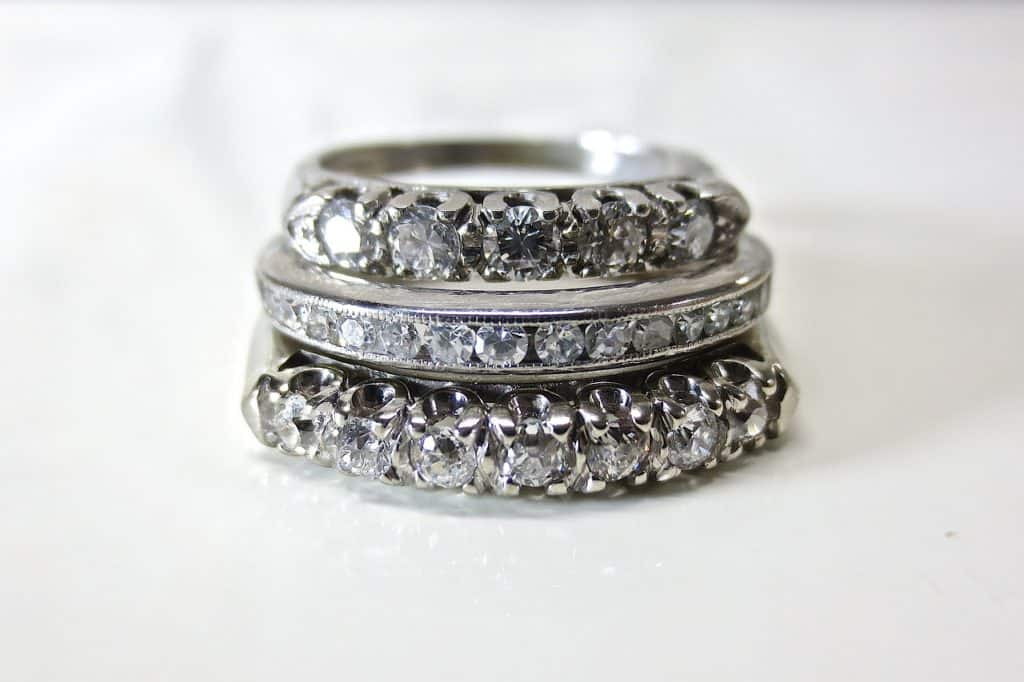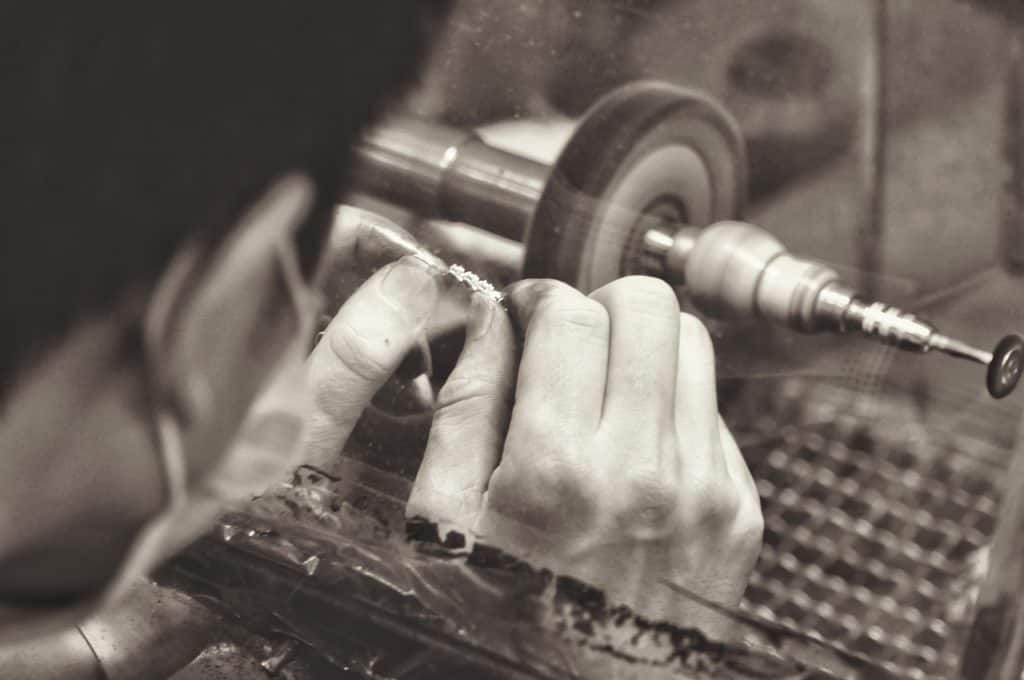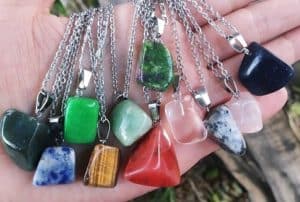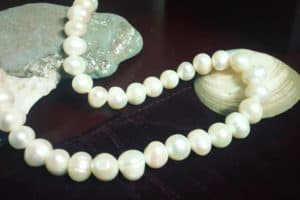Photo by Matheus Ferrero on Unsplash
Perhaps the very first piece of jewelry anyone gets their hands on(or gets on their hand) is a ring. So commonly are rings worn by men and women that it is important that a strong and sturdy ring band is chosen every time. However, there may be times when ring bands may give away and what you are left with is a broken ring band. But how can you go on to fix a broken ring band?
REASONS FOR RING BANDS GETTING COMPROMISED
The band of the ring, most commonly referred to as the ‘shank’ or ‘right shank’ of a ring, is the part of the ring which encircles the finger. Before being able to understand if and how the band of shank of a ring can be fixed, it is imperative to understand what factors may contribute to breaking of the band in the first place.
Why did my ring break?
Cracking or breaking of rings can be caused by various factors such as the environment(shocks and abrasions) which the ring is worn in, impurity in composition, frequent resizing the actual size of the ring relative to the finger, thinning of the shank, structural design flaws, and susceptibility to breakage for certain ring metals. A rather less known reason for cracking of rings may also be exposure to mercury, which may chemically compromise the ring’s structure.
Let’s look more into each of these in more detail, to make better sense of the matter.
Can gold rings or bands crack or break?
Although gold is the most common precious metal which is used to cast rings and bands, such rings too can become brittle, crack or eventually break. The main reason for this may be the lower carat rating and high percentage of impurities in the ring, causing susceptibility to breakage. In addition, porosity in the gold itself set in at the time of casting, as well as exposure to harmful chemicals such as chlorine can all increment the chances of a gold ring becoming brittle or breaking.
We should cover these major reasons for breaking of gold rings in more detail.
MAJOR REASONS FOR BREAKING OF GOLD RINGS
- A high carat rated gold ring tends to have a higher percentage of gold in it, and lesser amount of trace metals which add structural strength to complement the softness of gold. This is why high carat rated gold jewelry is advised to be cared for additionally, and not intended for rough handling or wearing.
Gold essentially is a soft an inert metal, which makes it the perfect choice for making jewelry. However, the trace alloyed metals added to it in order to make jewelry out of gold can react with chemicals, and hence your gold rings are susceptible to damage. In fact, white gold rings are the most susceptible to chemical attacks from bleach, and chemicals such as chlorine.
POROSITY : This is yet another cause of gold ring shanks or other sections breaking, cracking and giving away. Porosity is an at setting defect built into your gold ring or jewelry, as a result of air bubbles escaping to the surface of the gold, and causing dents or troughs to be built into it. This means there is less solid matter in your band, and hence it is susceptible to breaking off.
The below video takes your through the problem of porosity in gold rings, and how jewelers take care of it.
COMPARATIVE BREAKAGE SUSCEPTIBILITY BETWEEN GOLD VARIANTS
Although as we have discovered till now that gold rings a risk of breakage owing to varied factors, not all variants of gold rings are equal in terms of their susceptibility to breakage. Here are a few interesting facts you will find useful when selecting and/or caring for gold rings and bands.
- Yellow gold is softest of all the variants and hence high carat yellow gold rings tend to break easily owing to thrust as well as chemical exposure. As you increase the caratage of the jewelry(ring or band), the purity and composition share of pure gold in it increases, and so does the susceptibility to breakage.
- White gold, fares better than yellow gold jewelry in term of susceptibility to breakage.
Can white gold rings break easily?
The answer to this question is relative to the comparison metal used in jewelry. On an absolute basis however, white gold rings and bands have strength and durability, owing to the composition of trace metals/alloys including palladium, nickel and silver, along with the rhodium coating on top, which adds to the structural strength. When pitted against other variants of gold, white gold rings are harder than yellow gold ones and hence less prone to breaking. However, they are relatively more prone to breaking when compared to platinum or rose gold rings, predominantly driven by the structural strength of the composing metals( platinum and copper respectively).
BREAKING OF SILVER RINGS

Can silver rings or bands break?
Absolutely, silver rings and bands mostly being sterling silver, can break quite easily, owing to the fact that silver is a soft metal. With a hardness on Moh’s scale of 2.5, silver stands side by side to 24 karat gold and is rather soft structurally, hence prone to bending and breaking. Even sterling silver, which has a 92.5% purity of composition of silver, is rather soft to make rings and bands which do not break or crack.
Is sterling silver harder than gold?
In spite of the fact that sterling silver has 7.3% copper in it, which is a comparatively harder metal (3 on Moh’s scale), it still is not hard enough to make it harder than many variants of gold. 24 karat yellow gold measures 2.5, 18 karat yellow gold measures 2.75, 14 karat yellow gold measures 3-4 and white gold measures 2.8-4.0 on the Moh’s scale, making all of these equally or much harder than sterling silver.
Can silver rings or bands crack?
The tendency of developing cracks in any metal depends largely on the malleability ( or the ability to be bent and cast into shapes). Silver is highly malleable and this is why it is susceptible to cracking. Purer the silver piece, that is higher the purity of silver in its make, the more susceptible it will be to cracking. This is why sterling silver and its various variants tend to crack less easily as compared to pure silver jewelry.
BREAKING OF PLATINUM RINGS
Measuring 4-4.5 on the Moh’s scale,platinum is one of the hardest and strongest metal used for making bangles, bands and other pieces of jewelry. This is why most people believe that platinum rings and bands are practically indestructible, and will not crack or break in any way.
But is this really the case? Well,let’s find out.

Can platinum rings or bands, crack or break?
Contrary to the popular belief, platinum rings and bands can certainly be chipped, crack or even break. This is predominantly owing to reasons such as casting defects or imperfections and application of external pressure to such weakly cast bands or rings. A simple dry soldered crack is easy to repair, but if the cracks spread over a large surface, rectification may become difficult or not worth it.
REASONS FOR BREAKING OF PLATINUM RINGS OR BANDS
Below are some of the major reasons why platinum rings can show cracks or lines of breakage in them.
- A CONTAMINATED CASTING CRUCIBLE : If a case the casting crucible has a high percentage of old metal in it at the time of platinum ring or band casting, it can elevate the chances of cracking subsequently. While a 50% old metal in the casting crucible can work well with gold or silver jewelry casting, it can really make platinum rings and band crack more often than not.
- CASTING FLAME IMPERFECTIONS : The casting flame needs to be of a certain grade, for platinum bands and rings to be structurally stable. An overly oxidising flame, which may be caused by making the flame too short, is a known cause of structural instability in the resulting platinum ring.
- In addition to this, the use of acetylene gas as a torching fuel during casting of the platinum ring can in turn produce issues in the structural strength of the resulting ring. Propane, Hydrogen or natural gas are the only advised fuels to work with platinum.
- IMPROPER CASTING MACHINE : A casting machine is imperative to the process as it rotates the molten platinum and the centrifugal force generated by it sets the ring in a uniform volume across its spread. A relatively slow accelerating machine can thus fail to generate enough centrifugal force to spread out the platinum evenly, and lead to an unstable platinum ring or band.
- TEMPARATURE ISSUES : A metal temparature which is too low at the time of casting can turn the ring to be more susceptible to breaking in the long run. This is owing to the hasty solidification of the metal, which can increase porosity and inhibit strengthening in the ring.
Why do my rings or bands keep breaking?
If you see that a particular ring or band keeps breaking, it may be because of reasons specific to the ring such as the very metal used for making the ring, defects in casting, improper or rough handling of the ring, or ignoring emerging cracks and faults in the ring.
- If the ring that you have breaking frequently is yellow gold, then the chances of breaking are high anyways. Also, as the karatage starts to increase ( towards 24 karat), there is an increased susceptibility to breaking and cracking.
- Defects in casting in terms of high percentage of composing old metals, improper temperature maintainance, dirty crucibles, and porosity are some very usual reasons why the resulting rings tend to break quite easily. Thus if you happen to spot such a ring, its best to consult your jeweler who had cast it, in the very first instance.
- Rough handling, dents and frequent exposure to chemicals such as chlorine can also be a reason for frequent breaking of rings.
- Another very important, but commonly overlooked reason for repeated breaking of rings is the frequent resizing or fixing jobs done on the ring. Each such job basically puts in an inorganic solder or joint into the ring band, hence negatively affecting the structural stability of the ring
FIXING AND REPAIRS OF RINGS
Having seen the reasons why rings and bands tend to crack break or smash, we are now in a position to look at if and how we can go about fixing such rings and bands. We will start with seeing what is possible to be fixed, and then look at what is required to put these fixes and repairs in.
REPAIRING CRACKED RINGS
In terms of physical compromise to the structure of a ring, a ring can either crack, snap or be broken at one or multiple places. Each of these conditions requires dedicated remediation and fixing steps, which is the perspective we should take when chosing the most suited method to our case.
Let’s start our journey by seeing how cracks in various types of rings can be repaired.
Can you fix a cracked ring ?
Cracks which appear in various places on a ring or band can be fixed, and the ring be reclaimed, if they are identified and treated for in time. Fixing a cracked ring involves identifying the signs and areas of cracks appearing, judging the extent of cracks and then the most suitable method to address these. The methods can be filing the cracks, filing and then soldering these, shank replacement, etc.
We will next cover these steps of fixing rings and bands off cracks in further detail, and assess the viability of the various methods.
1. Judge the extent of cracks
Cracks are a dreaded imperfection in rings, as they are very hard to deal with, and even methods which can be used to deal with require chipping down the metal volume of the ring. Thus if your ring has started to show a network of cracks, it is best to get the entire band or shank replaced, than trying to deal with removing cracks.
If however all that you see is a few hairlines of cracks, then there is scope to explore repairing and handling these.
2. Identify ring area where cracks appear
Cracks in rings can either appear low down in the shank of the ring, or they can appear in the upper region of the shank. The reason why it is important to understand the region of the cracks appearing is because the fixing treatment varies considerably depending on this.
- If the cracks appear in the bottom region of the ring shank, it is viable to replace the whole shank than trying to repair it. This is because the lower portion of the shank has low density and volume of metal and thus a higher susceptibility of cracks reappearing, even if once fixed.

2. Ring cracks countering approaches
If cracks appear in regions further up the shank, there is more metal and hence you have options of repair to try. The first step should be to either use a drill or a fine filer to file the cracks away, so that you have a smooth surface to work with.
- Next you can take a clean sheet of the base metal and solder it in place, and then refiling to bring the ring back into shape.
- Another smart trick to work with repairing cracks in rings is to use a sharp graver and score the cracks. This ensures that the solder flows right into the cracks, instead of lying on the surface, hence effectively filling up the cracks.
- Another handy method of making sure cracks are filled effectively by soldering the rings is to clean the rings with an ultrasonic cleaner, which can remove even the last traces of grit and deposits from the cracks, giving enough space to the solder to flow in effectively. This is a great ultrasonic cleaner. It works well not only with jewelry, but also comes handy to clean your expensive watches, eye glasses and even silverware.
Can a cracked gold ring be fixed ?
Yes, a cracked gold ring can be fixed, but the viability of putting in the fix really depends on the extent and specific area of the ring, where the cracks have developed. A wide variety of soldering alloys are available, but not all of them are suitable for soldering gold rings and jewelry.
Also, attempting crack removal and control methods, as detailed above, are most aptly tried on low karat gold rings (upto 18 karat), as any more gold content would mean the ring is anyways structurally weak and soldering will be all the more tough.
Can a cracked silver ring be fixed ?
You may be surprised to know this, but silver is relatively easy to get cracks out of, when compared with gold or platinum. This is because on one hand silver is stronger than gold and hence filing away the cracks is relatively cleaner and easy to carry out. On the other hand, the soldering paste for silver does not need to contain too much of the base metal, as like gold or platinum. Also, unlike platinum, soldering of silver is easy to handle, and hence cleaner and cost effective.
Conclusion
While rings crafted out of certain metals are more susceptible to cracking and breaking than others, its best to know what the process of repair or fixing entails. This way you would know how much money needs to be expended and also if the repair would make sense in terms of an increased useful life.





Pingback: How Do You Get Dents Out Of Jewelry? -